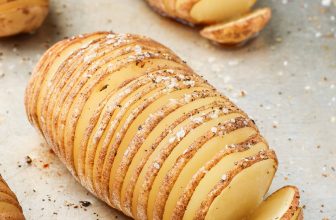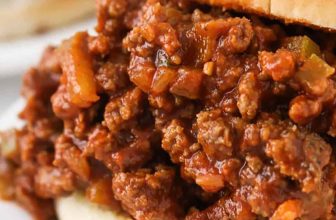This story was initially printed by Grist. Join Grist’s weekly newsletter here.
Oranges are synonymous with Florida. The zesty fruit may be noticed adorning the whole lot from license plates to kitschy memorabilia. Ask any Floridian and so they’ll let you know that the crop is a trademark of the Sunshine State.
Jay Clark could be fast to agree. He’s 80 and a third-generation grower working land his household has owned in Wauchula for the reason that Nineteen Fifties. However he’s unsure how for much longer he can hold at it. Two years in the past, Hurricane Ian pummeled bushes already weakened by a virulent and incurable illness referred to as citrus greening. It took greater than a 12 months to get better after the “complete crop was principally blown off” by 150 mph winds. “It’s a battle,” stated Clark. “I suppose we’re too hard-headed simply to stop completely, nevertheless it’s not a worthwhile enterprise proper now.”
His household as soon as owned nearly 500 acres in west central Florida, the place they grew oranges and raised beef. They’ve bought a lot of that land lately, and have scaled again their citrus groves. “We’re concentrating extra on the cattle,” he stated. “Everyone’s on the lookout for an alternate crop or resolution.”
The state, which grows roughly 17 percent of the nation’s oranges, grapefruit, and different tangy fruit, produced simply 18.1 million boxes throughout the 2022 to 2023 rising season, the smallest harvest in almost a century. That’s a 60 percent decrease from the season earlier than, a decline pushed largely by the compounding impacts of mysterious pathogens and hurricanes. This 12 months, the USDA’s just-released final forecasts for the season reveal an 11.4 percent spike in manufacturing over final 12 months, however that’s nonetheless not even half of what was produced throughout the 2021 to 2022 season.
Customers throughout the nation have felt the squeeze from these declines, which have been compounded by floods throttling harvests in Brazil, the world’s largest exporter of orange juice. All of this has pushed the price of the beverage to record highs.
As local weather change makes storms more and more seemingly, illnesses kill extra bushes, and water grows more durable to return by, Florida’s almost $7 billion citrus industry faces an existential menace. The Sunshine State, which was as soon as among the world’s leading citrus producers and till 2014 produced almost three-quarters of the nation’s oranges, has weathered such challenges earlier than. Its citrus growers are nothing if not resilient. Some have religion that ongoing analysis will discover a remedy for citrus greening, which might go a good distance towards restoration. However others are much less optimistic in regards to the path forward, as the hazards they face now are harbingers of the longer term.
“We’re nonetheless right here, nevertheless it’s not a superb state of affairs. We’re right here, however that’s about it,” stated Clark. “It’s greater than simply our household as citrus growers. If an answer isn’t discovered, there can be no citrus business.”
Citrus greening, an incurable disease spread by insects that ruins crops before eventually killing trees, has imperiled Florida’s citrus business for the reason that ailment took maintain in a grove in Miami almost twenty years in the past. It appeared a couple of years after an outbreak of citrus canker disease, which renders crops unsellable, and led to the lack of millions of trees statewide. Though greening has appeared in different citrus powerhouses like California and Texas, it hasn’t widely affected commercial groves in either state. The scope of the blight in Florida is by far the biggest, and costliest — since 2005, it has lower manufacturing by 75 percent. The Sunshine State’s year-round subtropical local weather permits the infestation to unfold at a better clip. However as warming continues to extend world temperatures, the disease is expected to advance northward.
“You see so many deserted citrus groves on the highways, all the roads,” stated Amir Rezazadeh, of the College of Florida’s Institute of Meals and Agricultural Sciences. “Most of these bushes are simply useless now.”
Rezazadeh acts as a liaison between college scientists scrambling to unravel the issue and citrus growers in St. Lucie County, one of the state’s top producing areas. “We now have so many conferences, visits with growers each month, and there are such a lot of researchers working to develop resistant varieties,” he stated. “And it’s simply actually making these citrus growers nervous. [Everyone] is ready for the brand new analysis outcomes.”
The best promise lies in antibiotics created to reduce the consequences of greening. Regardless of encouraging early results at reducing symptoms, therapies like oxytetracycline are nonetheless in preliminary levels and require growers to inject the remedy into each contaminated tree. Extra importantly, it isn’t a remedy, merely a stopgap — a option to hold troubled bushes alive whereas researchers race to determine the right way to beat this mysterious illness.
“We want extra time,” stated Rezazadeh. Growers in St. Lucie County began utilizing the antibiotic final 12 months. “There are some hopes that we hold them alive till we discover a remedy.”
The state’s whole citrus acreage suffered a large blow within the Nineteen Nineties when an eradication program for canker illness, then the business’s greatest foe, resulted within the culling of hundreds of thousands of trees on private properties. Within the years since citrus greening took maintain, the ripple results of the blight have compounded with an ever-present barrage of hurricanes, floods, and drought threatening growers.
Hurricanes do greater than uproot bushes, scatter fruit, and shake bushes so violently it may possibly take them years to get better. Torrential rain and flooding can inundate groves and deplete the soil of oxygen. Diseased bushes face specific danger as a result of sickness typically impacts their roots, weakening them. Ray Royce, govt director of Highlands County Citrus Growers Affiliation, likens it to a pre-existing medical situation.
“I’m an outdated man. I get a chilly, or I get sick, it’s more durable for me to get better at 66 than it was at 33. If I had some underlying well being points, it’s even more durable,” he stated. “Greening is type of this destructive underlying well being situation that makes the rest that occurs to the tree, that stresses that tree, simply additional magnified.”
It doesn’t assist that local weather change is bringing insufficient rainfall, higher temperatures, and record-setting dry seasons, leaving soils with much less water. A lack of precipitation has additionally dried up wells and canals in a number of the state’s most productive regions. All of this could scale back yields and trigger fruit to drop prematurely.
In fact, wholesome bushes have a better likelihood of withstanding such threats. However the tenacity of robust groves is being examined, and once-minor occasions like a short freeze may be sufficient to finish any already on the verge of demise.
“We rapidly had a bit of little bit of a run of unhealthy luck. We had a hurricane. Then after the hurricane, we had a freeze,” stated Royce. “Now we’ve simply gone by a drought which is able to little doubt negatively affect the crop for subsequent 12 months. And so we, in a approach, have to catch a few good breaks and have a couple of good years the place we’re getting the correct amount of moisture, the place we don’t have hurricanes, or freezes, which might be negatively impacting bushes.”
Human-induced climate change signifies that the respite Royce desperately hopes for is inconceivable. In reality, forecasters expect this to be the most active hurricane season in recorded history. Researchers have additionally discovered that warming will increase the pressures of plant diseases, like greening, in crops worldwide.
Though “nearly each tree in Florida” is troubled with the illness, and the truth of warming temperatures spreading pathogens is a rising concern, the state’s citrus producing days are removed from over, stated Tim Widmer, a plant pathologist who focuses on crop illnesses and plant well being. “We don’t have the answer but,” he stated. “However there are issues that look very, very promising.” A windfall of funding has been dedicated to the hunt for solutions to a befuddling downside. Florida’s legislature earmarked $65 million in the 2023-2024 budget to help the business, whereas the 2018 federal farm bill included $25 million annually, for the size of the invoice, towards combating the disease.
Widmer is a contractor on the U.S. Division of Agriculture’s Agricultural Analysis Service, which is devising an automatic system (referred to as “symbiont technology”) that will “pump” therapies like antimicrobial peptides that destroy pathogens in a bunch tree, which permits growers to now not must manually administer injections. Consider it “type of like a biofactory that produces the compounds of curiosity and delivers them immediately into the tree,” stated Widmer. However they’ve solely simply begun testing it in a 40-acre grove this spring. Different options scientists are pursuing embrace breeding new varieties of citrus that may very well be extra blight-tolerant. “It takes anyplace from 8 to 10 to 12 years to develop a long-term resolution for [greening], and in addition for a number of the local weather change components that may affect citrus manufacturing,” stated Widmer.
Time is one thing many family-owned operations can’t afford. Within the final couple of years, a mounting variety of Florida citrus groves, grower associations, and related businesses have closed for good. Ian was the breaking level for Solar Groves, a household enterprise in Oldsmar that opened in 1933.
“We undoubtedly suffered from freezes, hurricanes … and tried for so long as we might to remain in enterprise regardless of all of the challenges,” stated Michelle Urbanski, who was the overall supervisor. “When Hurricane Ian struck, that was actually the ultimate blow the place we knew we needed to shut the enterprise.”
The monetary loss was an excessive amount of, placing an finish to the household’s nearly century-long contribution to Florida’s enduring, now embattled, citrus legacy. “It was heartbreaking for my household to shut Solar Groves,” she stated. Amid a torrent of crippling infestations and calamitous storms, it’s a sense many others could quickly come to know.
This text initially appeared in Grist at https://grist.org/food-and-agriculture/can-floridas-orange-growers-survive-another-hurricane-season/. Grist is a nonprofit, unbiased media group devoted to telling tales of local weather options and a simply future. Be taught extra at Grist.org
Trending Merchandise

Cooler Master MasterBox Q300L Micro-ATX Tower with Magnetic Design Dust Filter, Transparent Acrylic Side Panel, Adjustable I/O & Fully Ventilated Airflow, Black (MCB-Q300L-KANN-S00)

ASUS TUF Gaming GT301 ZAKU II Edition ATX mid-Tower Compact case with Tempered Glass Side Panel, Honeycomb Front Panel, 120mm Aura Addressable RGB Fan, Headphone Hanger,360mm Radiator, Gundam Edition

ASUS TUF Gaming GT501 Mid-Tower Computer Case for up to EATX Motherboards with USB 3.0 Front Panel Cases GT501/GRY/WITH Handle

be quiet! Pure Base 500DX ATX Mid Tower PC case | ARGB | 3 Pre-Installed Pure Wings 2 Fans | Tempered Glass Window | Black | BGW37

ASUS ROG Strix Helios GX601 White Edition RGB Mid-Tower Computer Case for ATX/EATX Motherboards with tempered glass, aluminum frame, GPU braces, 420mm radiator support and Aura Sync

CORSAIR 7000D AIRFLOW Full-Tower ATX PC Case – High-Airflow Front Panel – Spacious Interior – Easy Cable Management – 3x 140mm AirGuide Fans with PWM Repeater Included – Black









